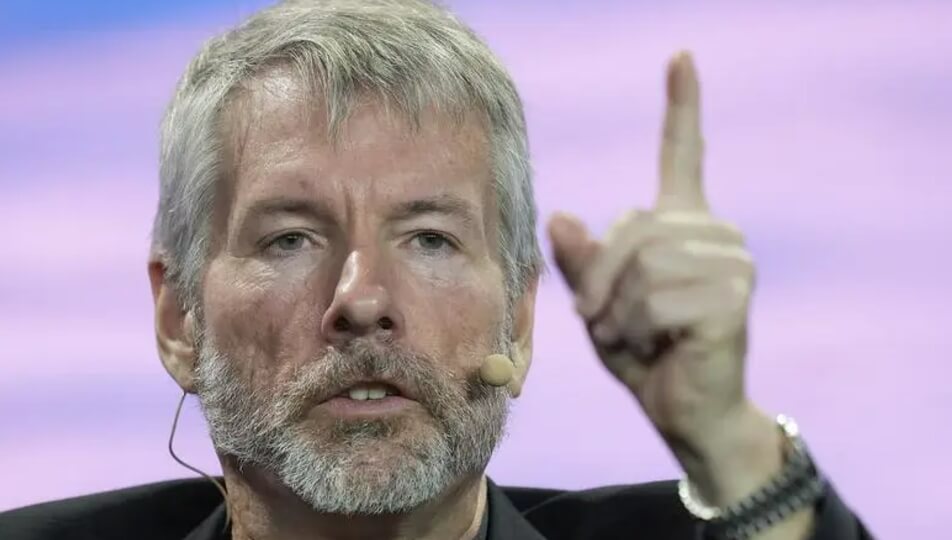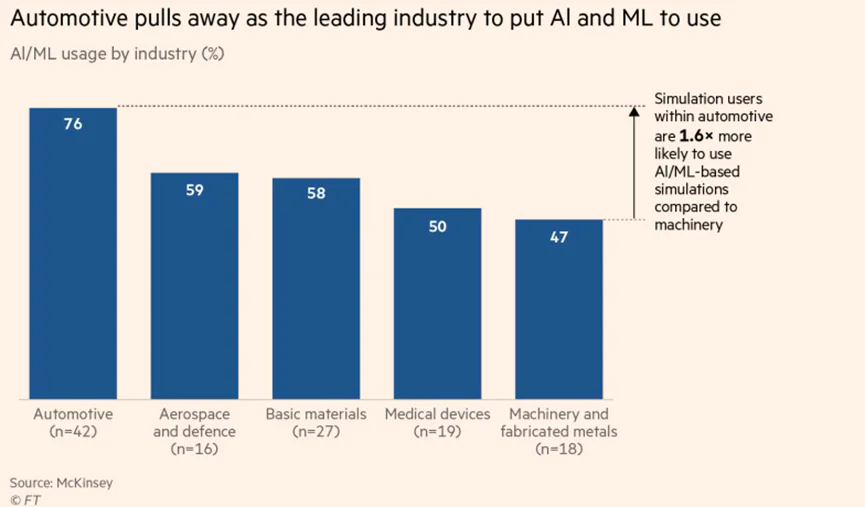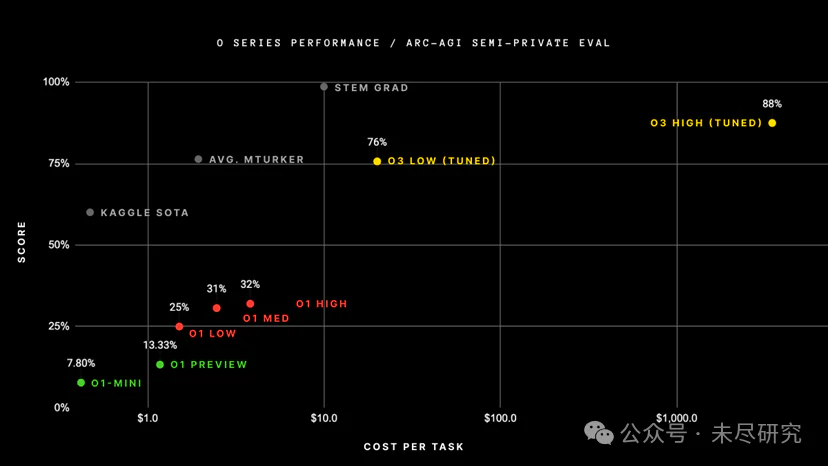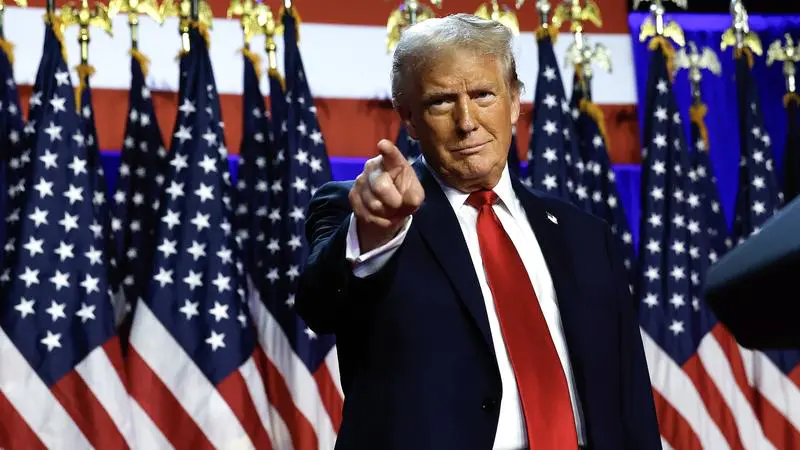MicroStrategy's meteoric rise has turned it into a Bitcoin powerhouse, but is its success built on a sustainable model? Delve into its transformation, from data analytics to the largest Bitcoin holder, and explore whether this could signal the next financial revolution—or a massive bubble.
In just four years, MicroStrategy's market value has skyrocketed by about 80 times. From being an unknown entity to becoming "the most eye-catching player in the spotlight," MicroStrategy has used Bitcoin in one hand and leverage in the other to become the new "story king" of the U.S. stock market—its momentum even surpassing Nvidia at times. 🚀

But looking at history, you'll find that this company initially had no connection to cryptocurrency. Its CEO, Michael J. Saylor, was once a free-spirited individual. In his 30s, his favorite thing to do was take a date to his office every week and hand her a book to read while he worked. 📚
At midnight, Michael would read a two-inch-thick book on Western Civilization's history. His friends and colleagues remarked that he would rather spend his weekends building "the next Oracle" than chasing love or playing golf at a club.
There is a road to the future in history, and Michael J. Saylor likely found a new understanding of currency in the long span of human history. After the COVID-19 pandemic broke out in 2020, he placed a high-stakes bet on Bitcoin—using the company's cash flow to keep buying more while leveraging to the maximum. By 2024, MicroStrategy became the company holding the most Bitcoin, even surpassing the U.S. government in the quantity held.
The rest is history: With Trump's presidency and Bitcoin prices soaring, foreign media predicted that Michael Saylor could potentially surpass Elon Musk to become the world's first trillionaire. 💰
So, what kind of company is MicroStrategy? Why has its stock price risen so quickly? Could it become the largest "Ponzi scheme" of the 21st century? 🤔
MicroStrategy's Rise
Founded in 1989 by Michael Saylor and his MIT classmate Sanju Bansal, MicroStrategy started with a $250,000 investment from DuPont. The company initially focused on data mining and predictive analytics. Its main goal was to help businesses better understand market trends and customer behavior. The decision-support software acted like an automated advisor, assessing the strength of companies by analyzing vast amounts of data from computer "warehouses." 🖥️
A classic example: The household products giant SC Johnson Wax used MicroStrategy’s software to demonstrate that their products, including Raid, Pledge, and Drano, sold faster than competitors. At the time, Saylor said that MicroStrategy’s goal was to "give every company a crystal ball."
By 1996, MicroStrategy was working with 150 companies, including Crestar Financial Corp, Giant Food Inc, AT&T, Johnson & Johnson, and Merck. From 1990 to 1996, the company grew its revenue by 100% every year, reaching $25 million in 1996. 🚀
"Terry Priebe, a former colleague, described Michael as a business genius who instinctively knew what to do and how to achieve goals efficiently," he told The Washington Post.
But then came the Internet bubble, which hit MicroStrategy hard. In March 2000, the company announced that it needed to restate its 1998-1999 financial reports due to incorrect revenue recognition methods. This news came just as the Internet bubble burst, causing investor confidence to plummet. The company's stock price dropped 62% in a single day, and in the months that followed, it fell by over 90%.
This event nearly doomed the company, but Saylor managed to guide it through tough times with layoffs, restructuring, and a focus on its core business. This story became a classic case from the Internet bubble era. The company gradually regained market trust and re-established itself as a leader in the business intelligence (BI) sector. 📈
Betting on Bitcoin: A "Hail Mary" Move
If MicroStrategy had stuck to its BI roots, its stock price wouldn't have surged in the same geometric fashion, nor would it have attracted global investor attention.
The game-changer came in 2020, when MicroStrategy announced a major pivot: Bitcoin would become its primary reserve asset. In August 2020, the company bought 21,454 bitcoins worth around $250 million. 💥
This decision was driven by Michael Saylor. After the COVID-19 pandemic broke out, governments and central banks worldwide implemented large-scale monetary easing policies, like quantitative easing, which led Saylor to worry about the declining purchasing power of fiat currencies such as the U.S. dollar. He realized that if MicroStrategy’s cash reserves stayed in dollar assets, they could lose value due to inflation.
Saylor then began researching Bitcoin, realizing that "Bitcoin is the first truly decentralized monetary energy network invented by humanity." He began to believe that Bitcoin was a more stable store of value than traditional currencies.
As he interacted more with Bitcoin believers, his buying spree was unstoppable.
From 2020 onwards, MicroStrategy completed over 20 Bitcoin transactions. By December 22, 2024, MicroStrategy and its subsidiaries held a total of 444,262 bitcoins, with an accumulated purchase cost of $27.7 billion, and an average purchase price of $62,257 per bitcoin. 🤑
Saylor's grand vision: MicroStrategy’s ultimate goal is to become the leading Bitcoin bank, evolving into a multi-trillion-dollar company. 🌐
Current Asset Status of MicroStrategy
As of now, MicroStrategy holds Bitcoin worth around $40 billion. The company itself is valued at about $80 billion, meaning the value of its non-Bitcoin assets is around $40 billion. However, according to its financial reports, MicroStrategy's revenue from its core business (excluding Bitcoin appreciation) has not grown since 2014, and it can almost be described as a company "propped up by dreams."
The key issue is: Since the core business isn't making money, where is the money to buy Bitcoin coming from? The answer is debt leverage. 💸
On one hand, MicroStrategy issued over $3 billion in convertible bonds this year. On the other hand, the company plans to raise $42 billion over the next three years, with half coming from equity financing and half from fixed-income securities. All of this will be used to buy more Bitcoin.
As a result, MicroStrategy’s influence on Bitcoin's price will continue to grow. As long as they keep buying, Bitcoin’s price will keep climbing, and MicroStrategy’s stock price will keep soaring. 🚀
In reality, analyzing MicroStrategy's performance through financial reports is becoming less accurate because, under current U.S. accounting standards, Bitcoin is considered an intangible asset. When Bitcoin prices fall, it has to be reflected in the financial reports as an "impairment loss." Even if the price rebounds soon after, the "impairment loss" can't be corrected.
Therefore, for MicroStrategy, not selling Bitcoin means their holdings have unlimited growth potential in the future. 💎
Is This a Ponzi Scheme?
Let's first look at the definition of a Ponzi scheme: It’s when new investors’ money is used to pay "returns" to earlier investors, creating a false illusion of high returns and low risk, attracting more people to join. The essence of a Ponzi scheme is an unsustainable cycle of funds. When the number of new investors or funds coming in isn’t enough to keep things going, the whole scheme collapses.
However, MicroStrategy’s convertible bonds, fixed-income securities, and Bitcoin are all completely legal. Bitcoin is no longer a virtual asset that can be controlled unilaterally, and the SEC hasn’t launched an investigation into MicroStrategy. Therefore, calling MicroStrategy a Ponzi scheme doesn’t hold up. ✅
The Strengthening and Collapse of Consensus
The only thing that will determine MicroStrategy’s future is consensus.
The consensus around Bitcoin among investors can determine its fate, just as the abandonment of Bitcoin’s value by institutions can. Water can carry a boat, but it can also capsize it. Once a "bear market" hits, a continuous drop in Bitcoin's price could trigger a death spiral for MicroStrategy. Bitcoin’s price drops, investors start selling convertible bonds, fixed-income securities, and equities, causing MicroStrategy’s stock price to fall. When Bitcoin's price reaches a certain point, and MicroStrategy can no longer raise funds, it will have to sell Bitcoin to pay off debts, triggering a chain reaction and wiping out regular investors. 😱
But will Bitcoin’s price fall during Trump’s term?
I’ve previously pointed out in the article "Crazy Bitcoin: An Energy Bomb?" that Trump made three major promises to the crypto industry before his election:
He pledged to include Bitcoin in the U.S. national strategic reserve and treat it as a vital part of the national economy, stating "never sell Bitcoin."
He promised to fire the current SEC chairman and fast-track crypto-friendly regulations, while suspending the development of Central Bank Digital Currencies (CBDCs), which had been seen as a major threat to decentralized cryptocurrencies.
He proposed increasing support for U.S. Bitcoin mining and related industries to ensure the country stays ahead in technology and financial innovation, preventing China and other nations from dominating the space.
Trump’s son even predicted that Bitcoin could reach $1 million. For Trump, the price of Bitcoin seems to have become tied to his administration’s success. From this angle, it seems unlikely that Bitcoin’s price will "crash" in the short term.
Looking back at Bitcoin's past year, it has experienced multiple favorable events: ETF approval, the fourth halving, and Trump’s victory. Bitcoin now seems to have shed its "scam" label and, with strong support from the U.S. president, has become highly sought after by major banks and tech giants. 💎







